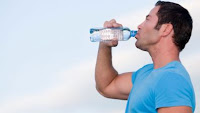The skinny on some of the undesired side effects of stepping out in the sun this season, and how to evade them
With winter fading, and the summer sun rearing its head, new skin problems emerge. If not protected, brown spots, wrinkles, and dehydration could damage the skin. "People often come rushing to myclinic with red rashes on their face, neck and arms. They complain of irresistible irritation and itching on these spots. Sometimes, it is not only one particular spot or place where the rashes appear; they can affect entire body," says Dr Swati Srivastava, dermatologist, VLCC, Mumbai.
Though there are many reasons for these rashes, from allergies to hormonal imbalance, a majority of the problems turn out to be the result of excessive exposure to the sun.
Sun damage ages your skin
If you compare the skin tone and complexion of skin exposed to sunlight daily, you will notice the difference. "Skin that has been minimally exposed will look decades younger," says Dr Srivastava.
The damage from UV rays is cumulative and can take years before it is apparent and prominently visible. It is generally by the time we reach our mid-thirties that the long-term effects of UV exposure start becoming prominent in the form of fine lines, wrinkles, changed skin tone and colour.
Allergy from the sun
A skin allergy from the sun is actually a reaction of the immune system, which is trying to protect cells from the harmful UV rays of the sunlight eventuating in red and itchy rashes.
The most common locations are the 'V' of the neck, the back of the hands, the outside surface of the arms and the lower legs. If you carefully observe the pattern of the places these rashes appear, they are mainly the areas which get exposed to sunlight even when one is clothed. "I have seen my share of rare cases where the rashes appear even in clothed areas in the form of hives or small blisters. The rashes could be itchy or burning and may last a few days," says Dr Srivastava.
Sunburn versus allergy from the sun
People often confuse sunburns and allergy from the sun. There is a fine line between the two. Sunburns appear on sun-exposed parts of your skin when technically your body's protective skin pigment melanin - which is supposed to fight harmful radiations and germs - falls weak and fails to protect your skin well enough from UV rays.
On the other hand, in cases of allergic reaction from exposure to the sun, your body's immune system reacts against the harmful rays and fights hard to protect your skin and this is what causes breakouts. It is also called hypersensitivity to the sun, or Polymorphous Light Eruption (PMLE). A skin allergy from the sun can occur within minutes of exposure to the sun, and also goes away much quicker after sun exposure has stopped compared to the time taken to revive from sunburn.
Sunburn can cause more grave problems than mere temporary pain and redness. Over time, frequent sunburn can contribute to premature ageing of the skin, and even lead to skin cancer.
What the sun can do to you
1. Thickening of skin, mainly on the back of the neck resulting in coarse wrinkles, a condition better known as elastosis.
2. Thinning of skin causing fine wrinkles.
3. Even within a short period of exposure to the sun, UV rays from the sun might cause the walls of the blood cells to go thinner leading to bruising.
4. Appearance of freckles and white spots on hands and legs respectively.
5. Three major types of skin cancer - melanoma, basal cell carcinoma, and squamous cell carcinoma.
5 quick tips to prevent sun damage
1. Sunscreen is an absolute must during the warmer months, so looking for a sunscreen with an SPF of at least 20 is recommended. A moisturiser with SPF is also a good alternative for those who are looking for versatile products.
2. Always wear a sun protector half an hour before stepping into the sun. Don't forget to apply the sun protector onto your ears and neck. If you have sensitive skin, use a sun protector which is oil-free and light in weight.
3. Drink a lot of water to prevent your body cells from dehydration.
4. Wear clothes that cover your body.
5. When you must be exposed to intense sunlight, wear protective clothing such as long pants, long-sleeved shirts, broad-brimmed hats and UV-protective sunglasses.
View the full article at : http://articles.timesofindia.indiatimes.com/2012-03-29/beauty/31253860_1_sun-damage-skin-cancer-rashes




